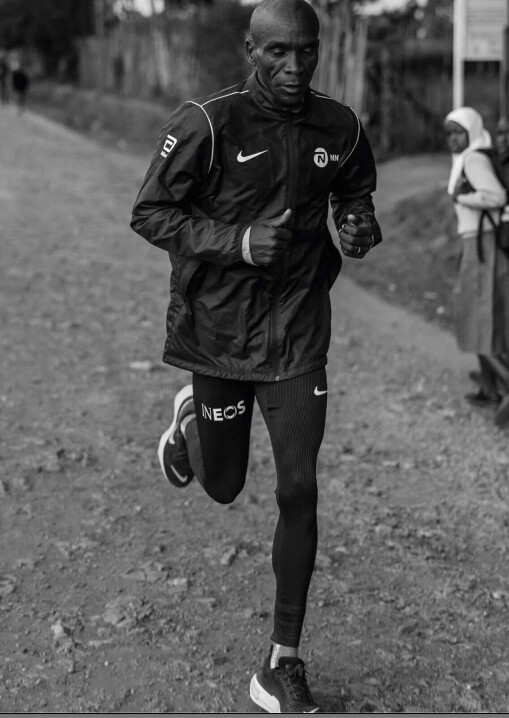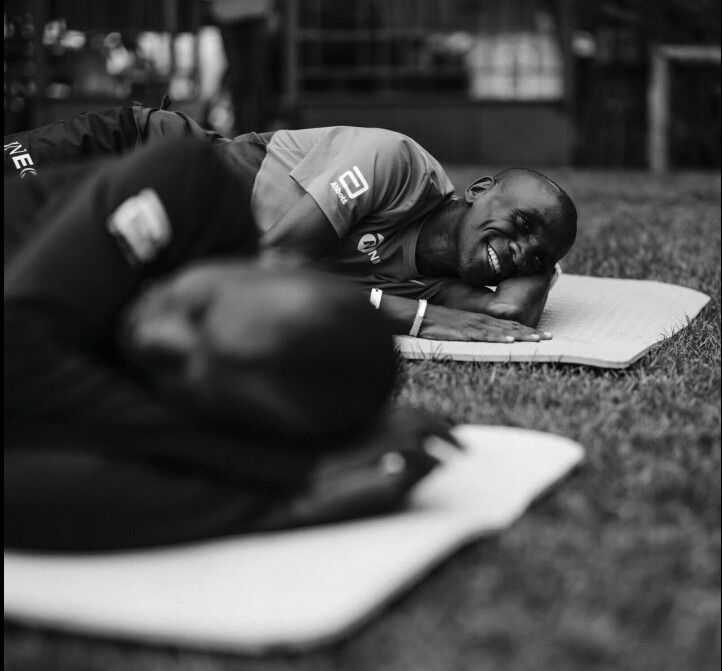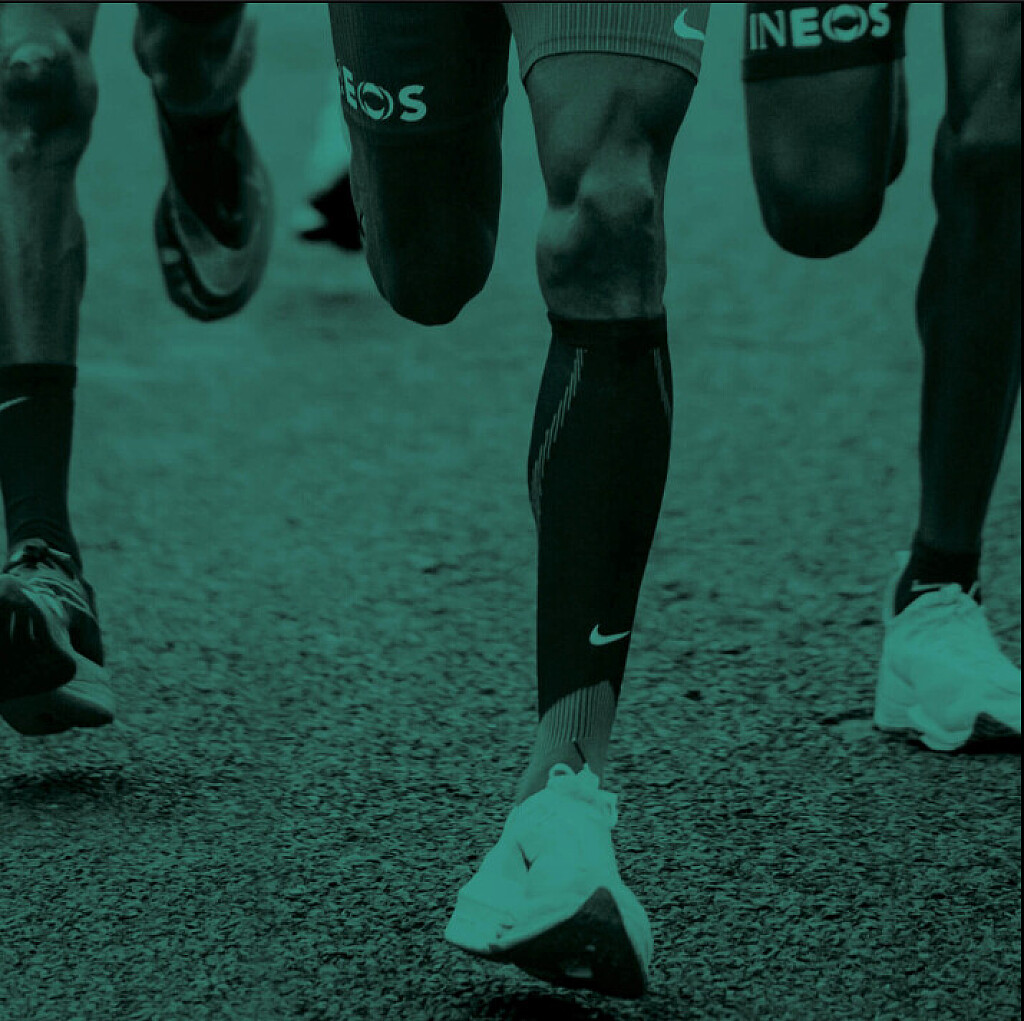Running News Daily
Running News Daily is edited by Bob Anderson. Send your news items to bob@mybestruns.com Advertising opportunities available. Train the Kenyan Way at KATA Kenya and Portugal owned and operated by Bob Anderson. Be sure to catch our movie A Long Run the movie KATA Running Camps and KATA Potato Farms - 31 now open in Kenya! https://kata.ke/
Index to Daily Posts · Sign Up For Updates · Run The World Feed
Five Lessons from the Marathon Goat and his team
THE MOST REMARKABLE aspect of the fastest marathoner in history is how unremarkable—and how accessible—his training is. Eliud Kipchoge has the best resources in the world at his disposal, but rather than relying on treadmills that cost more than a Lexus or recovery devices worthy of NASA missions, he follows simple training tenets that maximize how he recovers, what he eats, his mindset, and the conditioning he does after his runs.
1. SLEEP LIKE YOUR RUN DEPENDS ON IT


ELIUD KIPCHOGE SLEEPS up to 9 hours at night, often also taking an hour-long midday nap. Most of us don’t have the time or the 120-mile weekly workload to clock that much shut-eye, but we can still benefit from Kipchoge’s sleep hygiene cues.
At least 30 minutes before bed, he turns off or puts down all electronics. The habit reduces his exposure to blue light, known to delay the release of melatonin, leading to a decrease in sleepiness, says Kannan Ramar, MD, past president of the American Academy of Sleep Medicine. Then, instead of scrolling through social media (he prefers Facebook), Kipchoge winds down by reading at least two chapters of a book.
“If I have enough sleep, my body and my mind are free of stress and ready to go with the programs,” says Kipchoge.
While you’re asleep, your body is doing more than resting. Crucially, your pituitary gland releases growth hormone, which helps your muscles repair and grow, says Ramar.
Most runners don’t need a nap if they consistently get the recommended 7 to 9 hours, Ramar says. But when you don’t hit that target, naps can help counter short-term sleep loss and provide an energy boost for a late-day run, Ramar adds. He suggests a 20-minute doze between noon and 3 p.m. to relieve fatigue. Napping longer than 20 minutes can leave you feeling groggy due to entering a deep-sleep state, Ramar says.
2. REVIVE SORE MUSCLES WITH AN ICE BATH
TWICE A WEEK, Kipchoge takes a 10-minute plunge in his camp’s ice baths to aid his postrun recovery. It may not be pleasant, but studies find that cold water immersion (CWI) therapy like Kipchoge’s ice bath is effective. “Most research shows that over 48 hours, athletes have reported an improvement in DOMS [delayed onset muscle soreness] and sometimes corresponding improvements in strength and/or flexibility,” says Rebecca Stearns, PhD, a professor of kinesiology at the University of Connecticut.
Cold water reduces the body’s temperature, which narrows the blood vessels. This flushes metabolic waste from inflammation out of muscles to speed recovery, says Stearns. Water temperature between 50 and 59 degrees Fahrenheit for 10 to 15 minutes is cold enough to produce results, she adds.
You can set up an ice bath at home by filling a tub halfway with cold water. Then, depending on your tap temperature, add one to three 5-pound bags of ice. Stearns suggests trying CWI once or twice a week and checking with your physician to make sure you don’t have any contraindications for doing ice baths.
“It’s very intense. It’s not for everybody,” Kipchoge says. “You need to learn to relax and learn to absorb pain.”
3. UPGRADE YOUR DIET WITH PROTEIN
KIPCHOGE HAS ALWAYS maintained a highcarb diet, but after running 2:00:25 in Nike’s 2017 Breaking2 project, he began working with exercise biochemist Armand Bettonviel to improve his nutrition and further push his performance. Bettonviel, who develops nutrition plans for elite athletes, sought to up Kipchoge’s protein intake to aid his recovery as well as help to build and maintain his lean muscle.
“I’ve noticed a difference since I started to be serious about nutrition,” Kipchoge says. “Recovery is very fast, I have a lot of energy.”
While Kipchoge’s exact protein intake is confidential, Bettonviel suggests runners aim for 1.5 to 2 grams of protein per kilogram of bodyweight. For a 150-pound runner, that’s 102 to 136 grams.
Kipchoge’s meals feature Kenyan staples like ugali (a cornmeal porridge), potatoes, rice, chapati (a wheat flatbread), managu (an iron-rich leafy green), beans, whole-fat milk, eggs, chicken, and beef. Meat is only served about half the week, so to hit his protein goal Kipchoge drinks mala, a local sour milk, says Bettonviel. Every 6 ounces has about 7 grams of protein, making it comparable to kefir found in most stateside dairy aisles.
Bettonviel also introduced a high-protein porridge to the camp menu (Kipchoge eats it with fruit after training) made with whey protein and teff, an ancient grain that offers 10 grams of protein per cooked cup. You can DIY by mixing a half scoop of protein powder with whole-grain teff—stocked at many grocery stores and sold on Amazon—and cook it similarly to oatmeal. Alternatively, Kodiak Cakes makes oatmeal with whey protein and 12 grams of protein per serving.
4. MEDITATE TO BUILD MENTAL STRENGTH
KIPCHOGE IS AN especially mindful runner, says his coach Patrick Sang. While training and racing, he focuses on his breath and his movements, and aims to minimize outside distractions. It’s a skill that helps him embrace the pain and challenges of a marathon.
Mindfulness—a practice of focusing your awareness on the moment, with a kind and curious attention in a nonjudgmental attitude—can benefit any runner, says Corrie Falcon, director of mindfulness-based training for athletes at the University of San Diego Center for Mindfulness. Resting your attention on elements of a present moment, like your breath, heartbeat, or even a drip of sweat, can prevent you from getting caught in an inner dialogue mid-training or competition that may unravel your focus.
“In moments of high stress before or during a race, mindfulness has been shown to reduce the production of stress hormones, reduce blood pressure and heart rate, improve emotional regulation, and promote relaxation in the body,” says Tara Zinnamon, PhD, a neuroscientist and meditation teacher.
Kipchoge credits his focused, spartan lifestyle for developing mindfulness, but it can also be cultivated through a consistent mindfulness routine. Even just 12 minutes of guided meditation five days a week for one month can be effective, says Amishi Jha, PhD, a professor of psychology at the University of Miami.
If guided meditation seems outside your comfort zone, Falcon recommends a strategy you can try while running. She describes it as a “sense practice.” Run in silence. For two minutes, focus on what you see, then focus on sound, followed by what sensations you feel, and then smell. “And when you have a thought, label it ‘thought’ or ‘thinking’ and return to the present moment experience through the senses,” says Falcon.
5. BUILD BONUS ENDURANCE ON A BIKE
TO BOOST HIS training volume without increasing his risk of a running injury, Kipchoge rides a stationary bike for an hour twice a week after his runs.
Cycling is a concentric (shortening) muscle-contraction activity, which is easier for muscles to recover from, says Colorado-based coach Bobby McGee, who has worked with runners and triathletes (including Olympic gold medalist Gwen Jorgensen) for more than three decades. In running, the primary loading is eccentric (lengthening), which is more demanding and damaging.
“A one-hour endurance run is limited by leg fatigue, not heart and lung fatigue. A two-hour ride doubles the cardio conditioning but has minimal leg-muscle damage,” says McGee.
Kipchoge spins at an easy pace, which he says also helps reduce muscle soreness. “Cycling is a far more effective recovery modality than an easy run, especially for bigger runners with a slower cadence,” says McGee. He recommends cycling no more than twice weekly and for less than 20 percent of your overall training time.
Login to leave a comment




